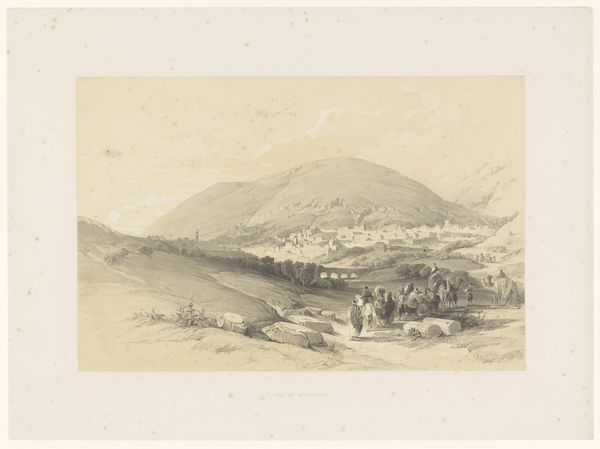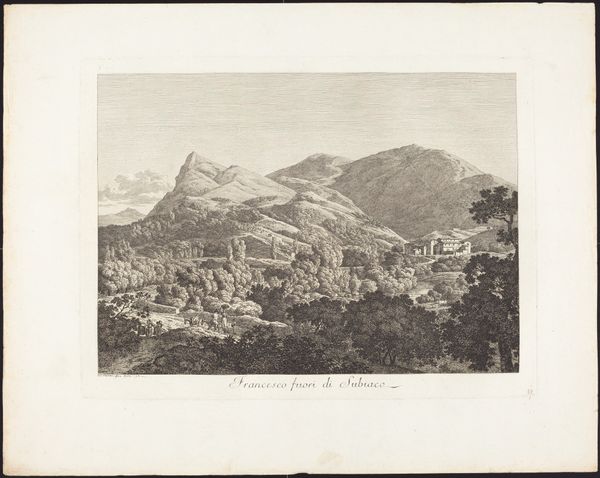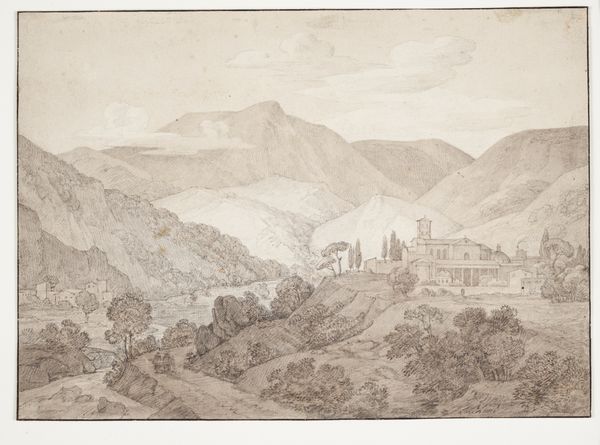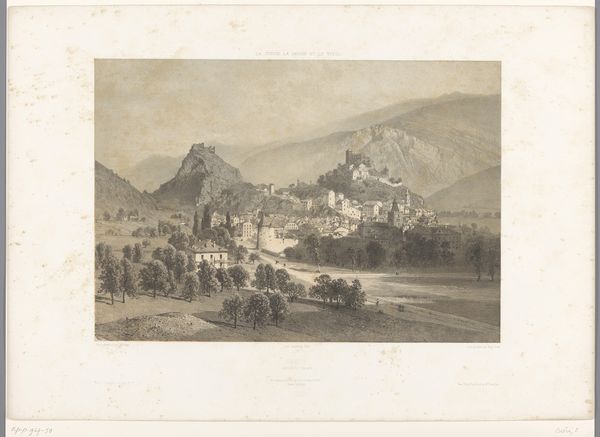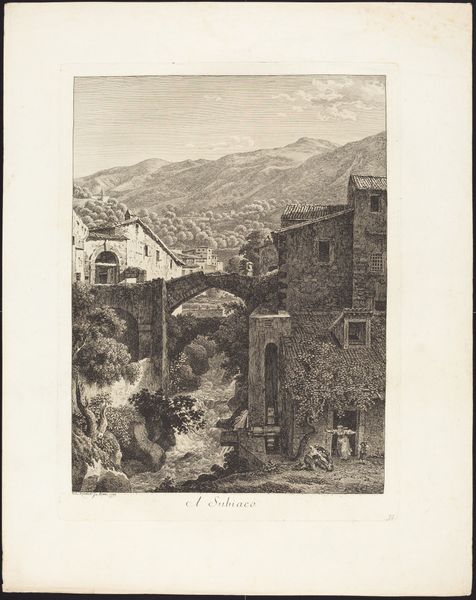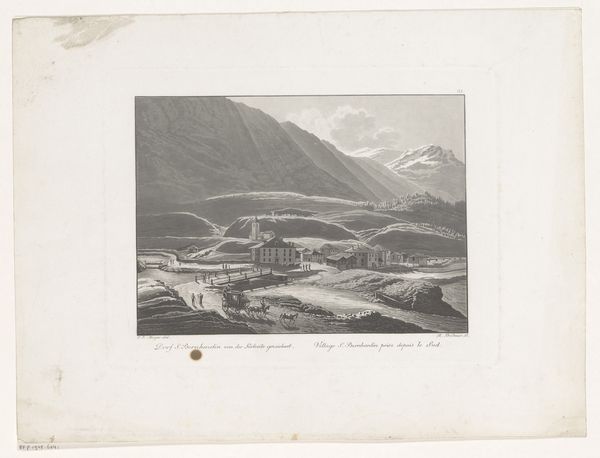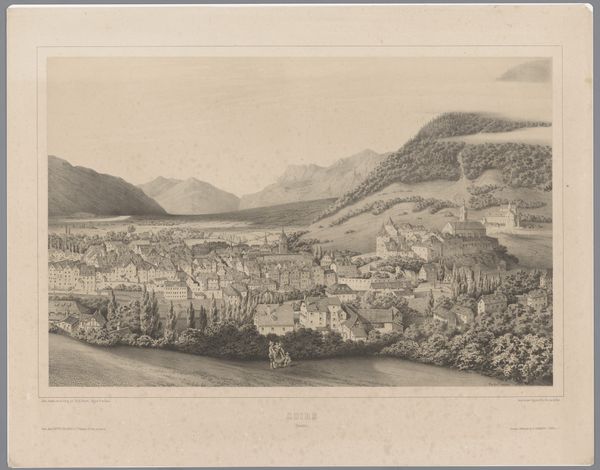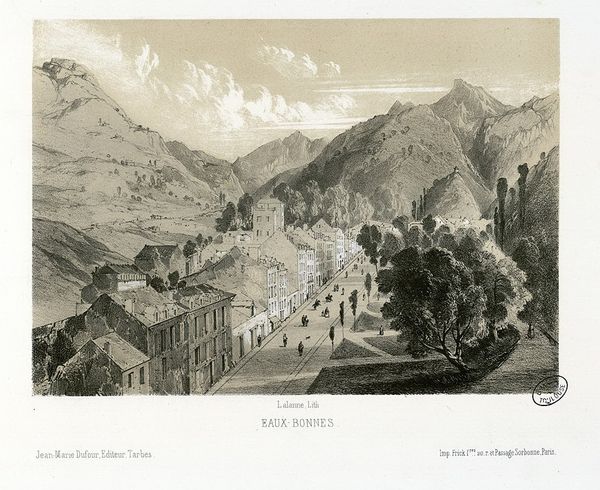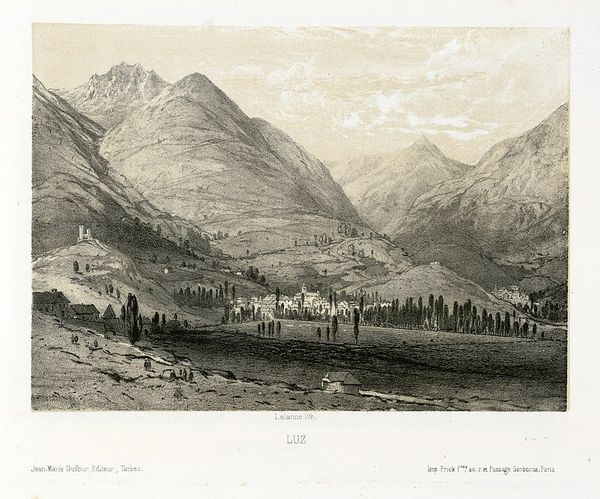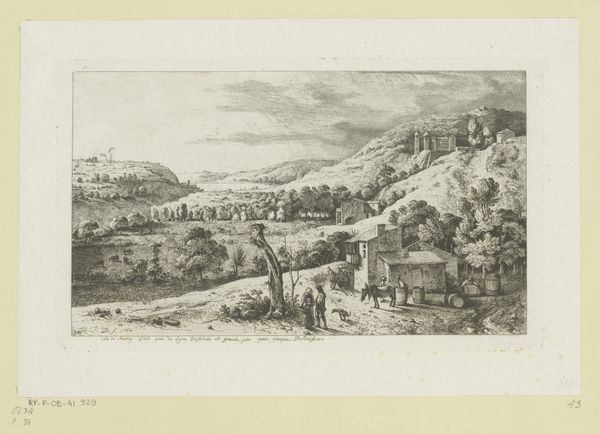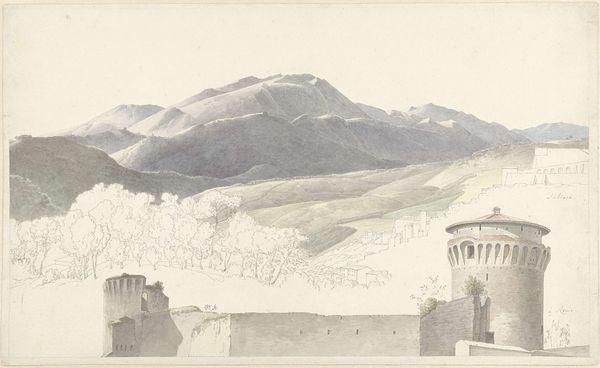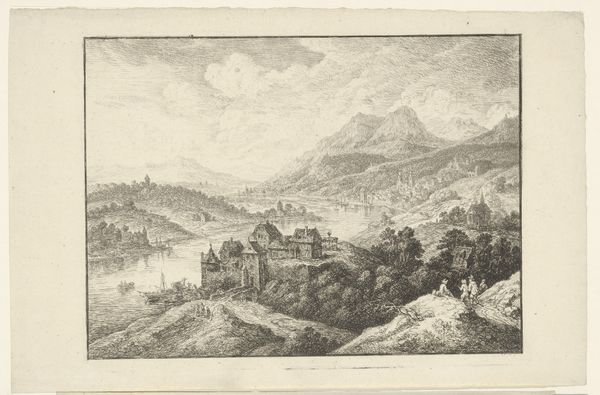
drawing, print, etching
#
drawing
# print
#
etching
#
landscape
#
mountain
#
cityscape
Dimensions: height 356 mm, width 525 mm
Copyright: Rijks Museum: Open Domain
Curator: Before us is "Zicht op Trente," or "View of Trento," created before 1853 by Eugène Cicéri. It’s rendered as an etching and print, currently residing here at the Rijksmuseum. Editor: My immediate impression is one of layered serenity. The crisp precision in the etching gives a real sense of depth as your eye travels into the distance. Curator: Precisely! Notice how Cicéri manipulates line weight. The foreground elements – the buildings and the stone wall – have a much heavier line than the distant mountains, enhancing the perspective. The composition guides our vision carefully. Editor: Yes, and the materiality of the print itself is crucial. Etching allows for the detailed capture of light and shadow, almost imitating a photographic effect despite being entirely hand-crafted. What was Cicéri's own process? Curator: Details surrounding Cicéri’s methods are somewhat sparse, but it's reasonable to presume a preparatory sketch preceded the etching, transferred onto the metal plate for the painstaking process of acid biting to create the recessed lines. This demanded serious time and meticulous craftmanship. Editor: Exactly! Considering the labor-intensive nature of printmaking, the reproduction and dissemination of this view speaks volumes about the demand for images and the broader cultural landscape of the time. Who would have commissioned such a print? Curator: Prints such as this served multiple purposes: documentary records, artistic exercises, and as commercially viable commodities in a burgeoning tourist market. One could say, Cicéri's viewpoint solidifies our own understanding of perspective – our ‘sight’ onto the city, carefully manufactured by the artist. Editor: An interesting notion – especially when you consider that prints like this became affordable for middle-class buyers who weren’t able to travel. This cityscape, this mountain, became accessible because of these reproductive mediums and markets, a world brought into the home through ink and labor. Curator: So while I focused more on Cicéri's masterful composition and line, your interest leads into the print's availability as an artwork intended for circulation. Editor: And hopefully encourages a richer understanding of what informs what we choose to reproduce as representations of beauty, travel, and urban experience. A conversation always worth having.
Comments
No comments
Be the first to comment and join the conversation on the ultimate creative platform.
